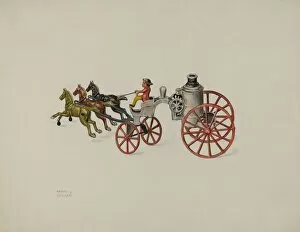Grossen Harry Collection
Harry Grossen was a prolific creator in the late 1930s, leaving behind a legacy of unique and diverse objects
All Professionally Made to Order for Quick Shipping
Harry Grossen was a prolific creator in the late 1930s, leaving behind a legacy of unique and diverse objects. From his Bell creation in 1937 to his Shirtwaist design in the same year, Grossen's talent knew no bounds. One of his notable creations is the Tammany Bank from 1937. This intricately designed bank showcases Grossen's attention to detail and craftsmanship. Its vintage charm transports us back to an era when saving money was a cherished tradition. In 1938, Grossen ventured into footwear with his Womans Clogs. These stylish clogs not only provided comfort but also added flair to any outfit. They were undoubtedly ahead of their time, showcasing Grossen's ability to combine fashion and functionality seamlessly. Another intriguing invention by Harry Grossen is the Panslider from 1937. This innovative kitchen tool revolutionized cooking techniques by allowing easy movement of pans across stovetops without scratching or damaging them. It exemplifies how Grossen thought outside the box to solve everyday problems. Grossen's creativity extended beyond practical items as seen in his Doll creation from 1938. With delicate features and intricate clothing details, this doll became a cherished companion for many children during that time period. The Butter Box from 1953 demonstrates that even years later, Harry Grossen continued producing exceptional designs. This butter box showcased elegance while keeping butter fresh—a testament to both form and function. Amongst other remarkable creations are the Thin Cake Iron (1938), Boys Boots (c. 1937), Stove (c. Toleware Tin Coffee Pot (c. 1938), Scales (c. 1938). Each item reflects Harry Grossens' dedication towards creating objects that were not only visually appealing but also served practical purposes effortlessly. Harry Grossens' Shirtwaist design stands out as it captures the essence of femininity and style prevalent during the 1930s.

















